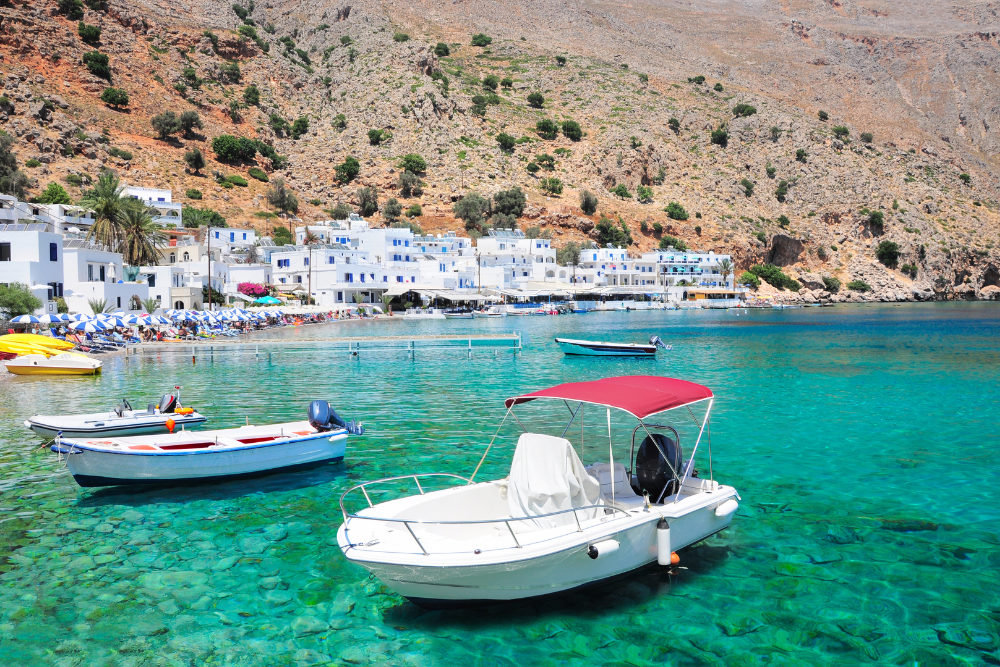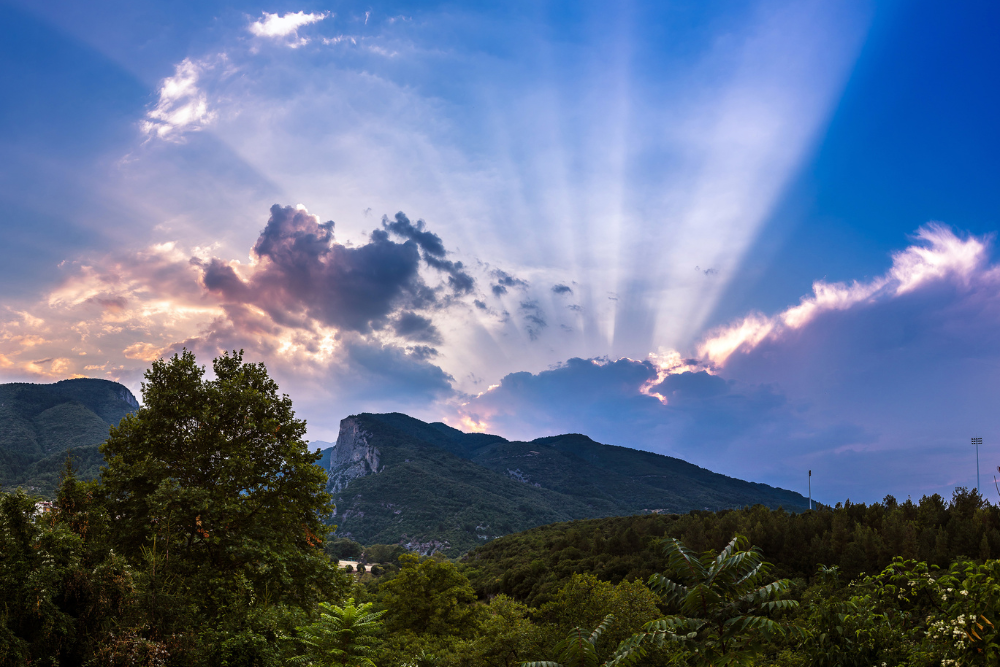Greek mythology is rich with tales of gods, heroes, and fantastical creatures. These myths have shaped Greek culture and continue to inspire art, literature, and tourism to this day. For those visiting Greece, it’s possible to step into the stories of these legends and explore the locations that bring these ancient myths to life. Whether you’re interested in ancient ruins, sacred sites, or natural wonders, here are some of the most famous Greek myths and legends you can explore in real life.
1. The Labyrinth and the Minotaur – Crete

One of the most famous Greek myths is the story of the Labyrinth and the Minotaur. According to the myth, King Minos of Crete ordered the construction of a labyrinth to imprison the half-man, half-bull creature, the Minotaur. The labyrinth was said to be located at the Palace of Knossos, one of the most important archaeological sites in Greece.
Visitors to the Palace of Knossos in Crete can explore the ruins of this once-grand palace, which is believed to be the inspiration for the labyrinth. Though the actual Minotaur may not have roamed these halls, the myth lives on in the architecture and artwork found at the site. You can also visit the Heraklion Archaeological Museum, which displays artifacts related to the Minoan civilization and the Minotaur myth.
- Where to visit: Palace of Knossos, Heraklion Archaeological Museum, Crete
2. The Odyssey – Ithaca
Homer’s “Odyssey” tells the story of Odysseus’ ten-year journey home after the Trojan War. His adventures take him to mythical places like the land of the Cyclopes and the island of Circe. The most significant part of the myth for travelers is Odysseus’ return to his homeland, the island of Ithaca.
Ithaca, off the coast of the Greek mainland, is a beautiful island known for its rugged landscapes and tranquil atmosphere. While the island may not have the monsters and magical creatures from the myth, it is filled with ancient ruins and sites that many believe are connected to the legendary tale. Vathi, the island’s capital, is thought to be the location of Odysseus’ home, and many visitors explore the island to trace the hero’s journey through its charming villages and ancient landmarks.
- Where to visit: Ithaca, Vathi, Odysseus’ Home
3. The Birthplace of Zeus – Mount Olympus

In Greek mythology, Zeus, the king of the gods, was born on Mount Olympus, the highest mountain in Greece. It is said that after defeating his father, Cronus, Zeus and his siblings took control of the world. Mount Olympus has always been seen as the home of the gods, a place where divine beings reside and where mortals should never tread.
Today, Mount Olympus is a popular destination for hikers and adventurers. The mountain is part of Olympus National Park and offers a range of trails with spectacular views. While you won’t encounter any gods during your hike, the awe-inspiring landscapes provide a sense of the majesty and mystery that once surrounded the mountain. Dion, an ancient city at the foot of Olympus, was a significant religious site dedicated to Zeus.
- Where to visit: Mount Olympus, Olympus National Park, Dion Archaeological Site
4. The Trojan War – Troy (Turkey)
The story of the Trojan War and the famous Trojan Horse is one of the most well-known myths in Greek legend. According to the myth, Greek soldiers used a giant wooden horse to infiltrate the city of Troy and win the war. While the war itself is a tale of myth, the city of Troy and its ruins are very much real.
Located in present-day Turkey, near the Dardanelles, Troy was once a powerful city that has been excavated to reveal a wealth of historical artifacts. Visitors can tour the Troy Archaeological Site, which includes remnants of walls and gates that date back to the time of the Trojan War. While exploring the ruins, you’ll be able to connect with the ancient myth of Achilles, Hector, and the gods who watched over the battle.
- Where to visit: Troy Archaeological Site, Hisarlik, Turkey
5. Persephone and Hades – The Underworld
In one of the most tragic Greek myths, Persephone, the daughter of Demeter, is kidnapped by Hades, the god of the underworld. Demeter’s grief over her daughter’s abduction causes the earth to fall into winter, and Persephone’s eventual return to her mother marks the beginning of spring.
While the Underworld itself is a mythical place, one can visit Eleusis, an ancient city near Athens, where the Eleusinian Mysteries were held. These secret rituals celebrated the myth of Persephone and Demeter, symbolizing the cycle of life, death, and rebirth. Cape Sounion, where the Temple of Poseidon is located, is also connected to the mythological underworld and provides spectacular views of the Aegean Sea, where many believed the boundary between the world of the living and the dead existed.
- Where to visit: Eleusis, Temple of Poseidon, Cape Sounion
6. The Argonauts – The Golden Fleece

The myth of the Argonauts and their quest for the Golden Fleece is one of the most adventurous tales in Greek mythology. Led by Jason, the Argonauts sailed on the Argo, a ship crafted by the gods, to find the legendary fleece in the land of Colchis. The journey took them through dangerous seas, mystical islands, and encounters with gods and monsters.
While the exact locations of the myth are unclear, the Argo’s journey is said to have taken the Argonauts to various islands in the Aegean Sea. Some of the islands, like Chios and Samothrace, are still home to ancient ruins and myths related to Jason’s quest. Sailing or island-hopping through the Aegean Islands allows travelers to step into the world of the Argonauts and experience the legends firsthand.
- Where to visit: Chios, Samothrace, Aegean Islands
7. The Hero Heracles – Twelve Labors

Heracles (or Hercules, in Roman mythology) is perhaps the most famous hero of Greek mythology, known for completing twelve impossible labors set by King Eurystheus. These tasks included feats like slaying the Nemean Lion, capturing the Ceryneian Hind, and cleaning the Augean Stables.
Many of Heracles’ labors are tied to specific locations throughout Greece. For example, the Nemean Lion was slain near the town of Nemea in the northeastern part of the Peloponnese. The Ceryneian Hind is said to have roamed the forests of Arcadia, while Olympia is home to the ruins of the site where the ancient Olympic Games were held, honoring the hero’s athletic prowess.
- Where to visit: Nemea, Arcadia, Olympia
Conclusion
Exploring Greek myths and legends is a truly immersive experience. Whether visiting the ancient ruins of Crete, hiking the heights of Mount Olympus, or sailing the Aegean Sea, you can connect with the stories that have shaped Greece’s cultural identity for millennia. These locations, steeped in myth and history, offer a glimpse into a world where gods and heroes roamed the earth, leaving their marks on the landscape that are still felt today. Exploring these sites in real life brings the timeless stories to life and offers travelers an unforgettable journey into the past.












